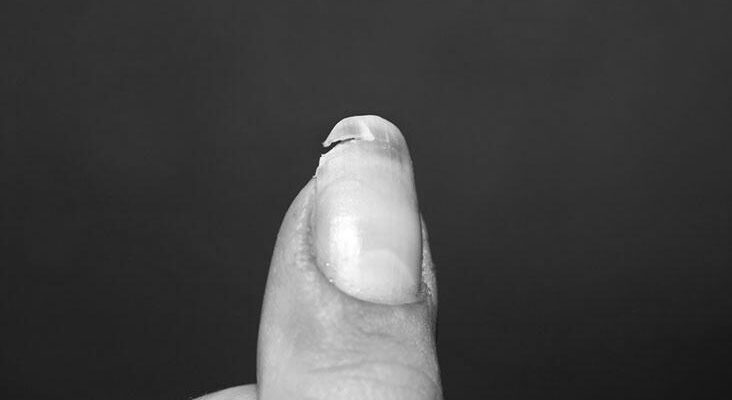What Do Split Fingernails Indicate?
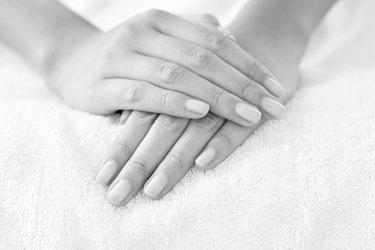
A common condition among many people, split fingernails can indicate vitamin A, zinc, iron, or B-complex deficiencies. They may also indicate dietary imbalances or even hypothyroidism. But what exactly do split fingernails mean? Read on to find out. And don’t forget to take a look at your nail growth! It’s a great way to discover what’s inside your body!
Biotin deficiency
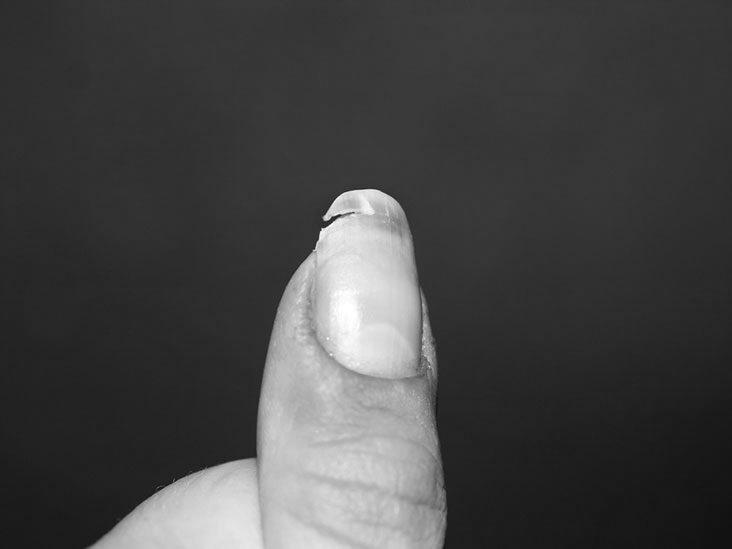
A biotin deficiency in split fingernails may result from a lack of this essential vitamin. The body requires about 30 micrograms of Biotin per day. Studies have shown that 2,500 to 3,000 micrograms may be enough to improve the condition of your fingernails. The best food sources of Biotin are protein and fatty acids.
Moreover, deficiency in Biotin can lead to brittle, split fingernails. It is essential to add Biotin to your diet, which you can find in animal products, nuts, and sweet potatoes. It is also necessary to use gloves when doing activities with your hands because biotin deficiency in fingernails can make your fingers more vulnerable to infection.
In addition to providing a protective barrier, Biotin is essential for healthy nail growth. It promotes cell growth, aids in the metabolism of protein-building amino acids, and helps your body produce new cells. Eating more biotin-rich foods and taking supplements may also help strengthen your fingernails. Researchers found that 2.5 micrograms of Biotin per day improved symptoms for 63% of participants. Biotin has no Recommended Dietary Allowance (RDA), but a Recommended Adequate Intake of 30 micrograms is adequate for most people.
It is essential to increase your fish, eggs, and beans intake. Additionally, you should avoid picking, biting, or pulling on your nails. For the best results, consult with your doctor about biotin supplements. Even though biotin deficiency in split fingernails may result from poor diet, there are many other causes of the problem.
Although protein deficiency is not the most common cause of split fingernails, it is a vital ingredient to increase your intake of Biotin. This vitamin is found in many protein-rich foods and may help improve the condition of your fingernails. Further, it may also be the result of a biotin deficiency. Biotin deficiency in split fingernails can also be a lack of iron in your diet.
Nutritional imbalances
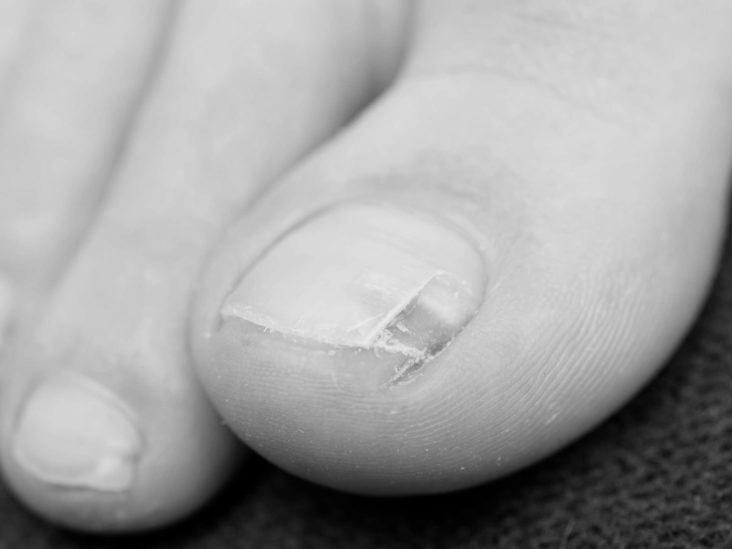
While cracked and split fingernails usually do not indicate vitamin deficiency, some nutritional factors may cause them. For example, low levels of Biotin, an essential vitamin found in certain plant foods, may contribute to the condition. Even though protein is a crucial nutrient for nails, too much protein can result in brittle, cracked, or split fingernails—Biotin in egg yolks, liver, nuts, beans, and dairy products.
The appearance of horizontal or vertical nail ridges can also point to nutritional deficiencies. Split nail grooves may indicate low zinc, a symptom of anemia, or a nutrient deficiency. These lines are generally harmless, but they may indicate a more severe issue such as anemia, diabetes, or kidney disease. If you notice horizontal or vertical nail lines, see your doctor.
The shape of the nail can tell doctors about your overall health. While it may indicate a nutrient deficiency, it can also be a vitamin B or calcium deficiency. A daily multivitamin can also help strengthen your nails. Taking a daily multivitamin may be an effective solution for people with soft pins. And if the ridges are too deep, it may be an indication of an iron deficiency.
While the cutaneous appearance of your nails is essential, they also serve as a mirror for your body’s internal makeup. Many nutritional deficiencies can show up in your nails. Although there are many possible causes, many of these deficiencies are minor and nonspecific, making them difficult to detect. This article will discuss what constitutes the nail plate, how it changes in nutritional deficiency states, and how these clinical conditions can lead to nail disorders.
Fungal infection
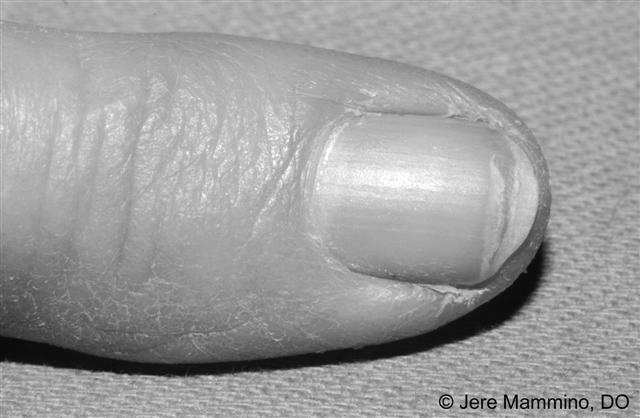
If your nails have split, the chances are that you’ve got a fungal infection. The fungal infection usually takes hold when you’re in a locker room or shower. The fungus lives in the warm, damp environment of the nail bed and enters the nail through cracks. Although you can contract nail fungal infections at any age, it is most common among older adults. It can also occur in people with circulatory issues, diabetes, and weakened immune systems. Furthermore, men are more susceptible to the infection than women.
Aside from nail fungus, you can also treat the problem using topical antifungals. The medicine penetrates the nail plate and kills fungi and some other pathogens. A few antifungals have been approved for topical use outside the United States and are available in other countries. These medications include amorolfine, terbinafine, 5% solution of tavaborole, and griseofulvin.
In addition to the fungi, non dermatophytes can grow on positive fungi specimens. Yeasts are the most common culprits in the disease, but fungi like Alternaria and Aspergillus can also invade the nail unit directly.
A variety of antifungal agents have to treat onychomycosis. Some of the older ones have low efficacy and can cause side effects. However, three recently developed antimycotic agents are promising with good safety profiles and short treatment times. Moreover, their intermittent schedules are likely to increase compliance and reduce costs. So, if you notice a split fingernail, don’t delay your treatment.
Stress
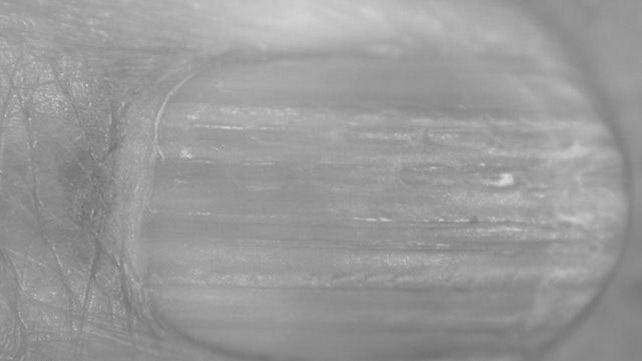
Split fingernails are a common symptom of stress. The nail becomes brittle and splits over time. It often happens because you aren’t paying attention or performing an activity that makes the nail bed. Sometimes the stress is too intense, and the nail bends but doesn’t snap. During times of stress, the layers of the nail are too much for it to recover. It is essential to use a lotion made of jojoba wax esters in these cases. Also, wearing gloves can help prevent brittle nail tips.
Besides brittle fingernails, split fingernails are another sign of stress. Apart from nail splitting, you may also notice ridged and brittle nails. Both are signs of poor nutrition and stress. Stress can also cause temporary hair shedding and weak fingernails. Therefore, getting enough rest and food is essential to keep your nails healthy. It is best to consult a dermatologist if you experience these symptoms.
Besides the brittle nails, split fingernails can also indicate a thyroid problem or an underlying health issue. For instance, rubbing your fingers over your thumbnails can lead to a ridged pin. Other physical and emotional stress may cause horizontal lines in your fingernails. In addition to brittle, cracked fingernails, a person suffering from anxiety is also more likely to develop an infection in the nail.
In addition to brittle nails and skin elasticity, stressed people also suffer from unhealthy habits, lowering their overall health. It may affect their waistlines and work performance. In addition to skin issues, prolonged stress can damage your nails and hair. It is essential to get the help you need to overcome the causes of stress. Try taking some time to exercise, practice relaxation techniques, and look at your stress management routine.
Apart from regular nail care, you should avoid soaking your nails in water. Split nails indicate stress, which can take weeks to manifest. Avoid using your nails for everyday tasks, like opening things, as this will only worsen the problem. Instead, use gloves and band-aids to avoid scratching your fingernails. It might be necessary to visit a doctor and have the split nails treated in severe cases.
What Vitamin Are You Lacking When Your Nails Split?
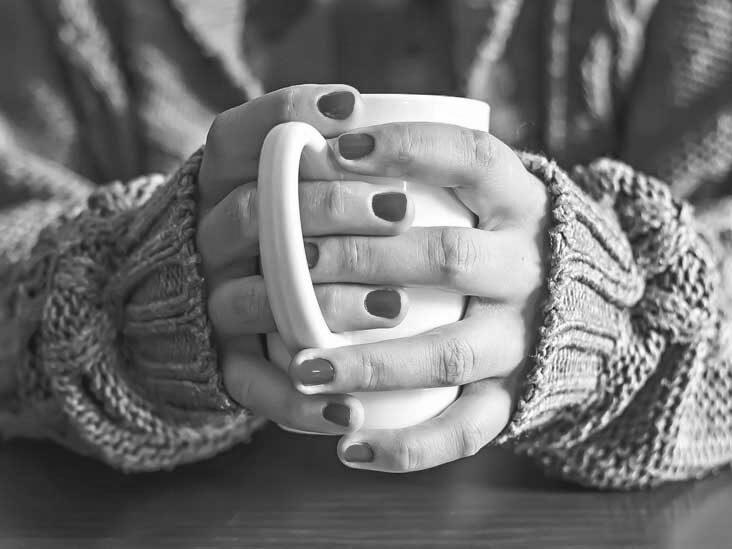
If you’re a nail polish, you know that the FDA doesn’t regulate supplements as drugs and medications do, and so you’re probably suspicious when you see a supplement that claims it can make your nails grow faster or stronger. And, you might be concerned that the marketing hype behind a supplement is as full of empty promises as to the product itself. But you’re not alone. The problem is that many of these supplements are simply unreliable or even harmful.
Zinc
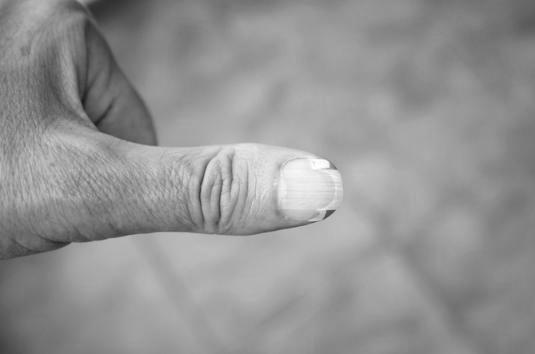
When your nails split, you may be deficient in zinc. Deficiencies in zinc can result in soft, flaky nails. Although the FDA does not regulate these supplements, many of them have empty promises. Luckily, it is possible to treat these conditions with a vitamin supplement. This article will discuss how zinc can help your nails grow back correctly. And we’ll talk about how you can make sure your body gets the proper amounts of these essential vitamins and minerals.
First, you can take a zinc supplement if you notice your nails are splitting. You can find many zinc supplements on Amazon in the UK and the US. Another effective supplement is Vitabiotics Perfectil Triple Active, which is at Amazon.com. You can buy this product on Amazon and check out reviews from other users. In addition to split nails, zinc deficiency can cause the cuticle to become inflamed. It is also essential to take a vitamin supplement if you notice white spots on your nails.
In addition to helping to prevent split nails, Vitamin C helps fight off colds. It also helps to give your nails a solid shape.
Besides split nails, zinc deficiency can cause delayed growth, frequent infections, and brittle nails. People who consume a low zinc diet are at increased risk of developing a zinc deficiency, including vegetarians, vegans, and pregnant women. Severe zinc deficiency can even be inherited. In these cases, zinc deficiency can cause the nails to break, split, and fall off.
While zinc is not a vital part of your diet, it is essential for the production of myoglobin and hemoglobin, which carry oxygen throughout the body. Zinc deficiency can also lead to fatigue, a lowered body temperature, and brittle, splitting nails. While severe zinc deficiency is rare in developed countries, it can be an inherited condition known as acrodermatitis enteropathica.
Vitamin B12 deficiency can also result in rounded or flat-shaped nail ends and excessive dryness. Vitamin B12 and calcium deficiency can also cause brittle nails, round or darkened tips, and ridges. Vitamin B12 can also prevent fungal growth under the injured nail plate. However, it is essential to check for any other deficiency before choosing a medication.
Vitamin C
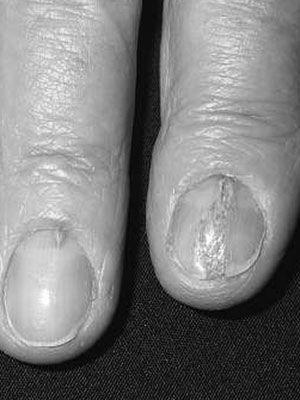
If you’ve noticed your fingernails splitting and are worried that you may have a health problem, you might be deficient in vitamin C. The good news is that there’s a simple way to increase your Vitamin C intake without even noticing it. You can eat plenty of salmon and other fish to promote good bone and nail health, and you can also include green peas and sunflower seeds in your diet.
Other common causes of split fingernails include trauma and environmental hazards, such as prolonged exposure to water. However, deficiency in Vitamin C may also play a role. Taking a supplement containing vitamin C can improve the health of your fingernails. Here are some other natural remedies for split fingernails. Vitamin C is the essential vitamin for healthy nails. Vitamin C is necessary for preventing split fingernails and can be found in oranges, tomatoes, etc.
If you notice streaks or flat-looking nail color, this could be a sign that you’re missing a vitamin. In addition to taking vitamin C supplements, you should eat plenty of foods that contain Vitamin B. Eating a healthy diet rich in vitamin B will also promote healthy cell growth. Moreover, vitamin C will also improve the overall health of your nails. means that you’ll be able to grow beautiful, healthy nails again.
Another natural supplement for splitting fingernails is Biotin. This B-complex vitamin promotes healthy cell growth and aids in the metabolism of protein-building amino acids. It may strengthen brittle fingernails. In one study, participants who took 2.5 mg of Biotin daily reported improving their symptoms. Biotin is not a Recommended Dietary Allowance, but its Adequate Intake has 30 micrograms per day.
When you notice a noticeable change in your nail health, you should visit a doctor to check whether you’re deficient in Vitamin C. This deficiency can cause your nails to become crumbly or split. In some severe cases, the nails turn a blue or black color. It’s important to remember that short Vitamin C can lead to serious health issues, including heart disease, anemia, and muscle weakness. Vitamin C will also prevent fungal growth under damaged nail plates.
A lack of Vitamin C may also cause your nails to hang and crack. When you don’t have enough Vitamin C, you may have dry, brittle, and brittle nails that break easily. Vitamin Cin the human body through diet or nutritional supplements. A vitamin C deficiency is a common cause of nail splitting.
Biotin
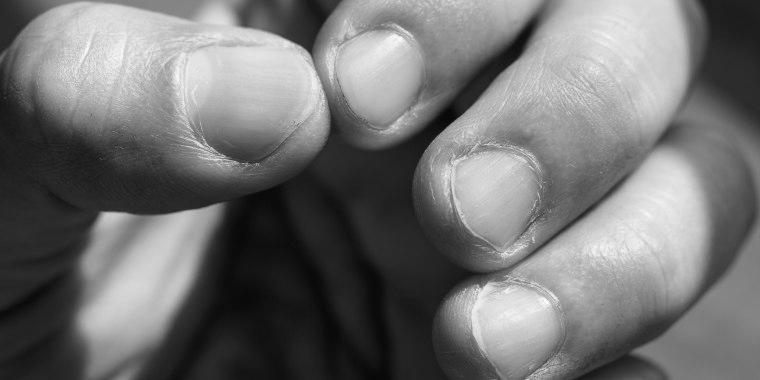
When your nails split, there is a good chance that you are deficient in Biotin. Biotin is in sufficient quantities in many common foods, but it’s often hard to get enough of it from your diet. Other B vitamins also play an essential role in nail health, including B12. B12 is necessary for red blood cell development and absorption. Red blood cells are essential for healthy nails as they help transport oxygen throughout the body.
Research indicates that Biotin may strengthen your nails. It’s available in many protein-rich foods, so increasing your intake may help. The recommended daily allowance for adults is 30 micrograms. While you can’t guarantee that supplementation will help your nails grow more robust, it can increase their thickness. A typical person needs about 30 micrograms of Biotin a day.
Another vitamin that you might be lacking is Biotin. This water-soluble nutrient aids the body in the metabolism of proteins and fats. People with low biotin levels may have chronic conditions, such as intravenous feeding, long-term consumption of raw eggs, or a hereditary deficiency that hinders biotin absorption. In these cases, to remedy the defect. Those with low levels of Biotin should also eat more food sources that contain Biotin.
If your nails are splitting, you might be deficient in Biotin. Biotin is a B-complex vitamin that promotes healthy cell growth and helps the metabolism of protein-building amino acids essential for healthy nail growth. Adding biotin-rich foods and supplements to your diet can help strengthen brittle fingernails. In one recent study, participants taking 2.5 mg per day of Biotin showed improvement in symptoms.
The best way to treat a biotin deficiency is to eat more fish, nuts, and fatty foods. Eating healthy foods is the first step in treating brittle nails, but the second step is to increase biotin intake. Supplements of Biotin are widely available and may even help improve your nails. However, you should consult your doctor before consuming any supplemental biotin products.
You may already be taking a multivitamin or skin supplement that contains Biotin. Depending on your current diet and your age, biotin supplements may be an excellent way to boost your biotin levels. It’s also important to let your doctor know about your supplements, including Biotin, since it can cause several serious problems. So, if you have split nails, it’s time to take action!
If you notice your nails splitting and are worried about breaking, consult a dermatologist right away. Often, these problems can be an indication of an underlying medical condition. Raynaud’s syndrome, in which the blood flow to your fingers is poor, can cause these problems. Other possible causes of brittle nails include iron deficiency anemia and thyroid disease.
